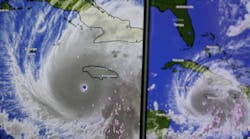
It’s not over by a long shot. Although the new Clean Water Rule was announced months ago, last week a federal judge in North Dakota issued a temporary injunction against it, just a day before the rule was scheduled to take effect. And that’s not the only challenge it’s facing.
The injunction applies to North Dakota and 12 other states that had sued to block the rule, arguing that the rule infringes on state sovereignty and is unnecessary. (The other 12 are Alaska, Arizona, Arkansas, Colorado, Idaho, Missouri, Montana, Nebraska, Nevada, New Mexico, South Dakota, and Wyoming.) US District Judge Ralph Erickson said EPA exceeded its authority in issuing the rule. The rule is being enforced elsewhere throughout the country as of Friday, August 28.
It’s not over by a long shot. Although the new Clean Water Rule was announced months ago, last week a federal judge in North Dakota issued a temporary injunction against it, just a day before the rule was scheduled to take effect. And that’s not the only challenge it’s facing. The injunction applies to North Dakota and 12 other states that had sued to block the rule, arguing that the rule infringes on state sovereignty and is unnecessary. (The other 12 are Alaska, Arizona, Arkansas, Colorado, Idaho, Missouri, Montana, Nebraska, Nevada, New Mexico, South Dakota, and Wyoming.) US District Judge Ralph Erickson said EPA exceeded its authority in issuing the rule. The rule is being enforced elsewhere throughout the country as of Friday, August 28. [text_ad] North Dakota’s attorney general, Wayne Stenehjem, was among officials from 30 states who requested a month ago that the rule be postponed for nine months. Getting no response, the 13 states filed for a preliminary injunction. Also worth noting, though, is that on the same day, another federal judge in Georgia rejected a similar request from 11 other states seeking to block the new rule. Several other lawsuits against the rule are pending. There are also bills in the works in both houses of Congress to block or amend the rule. Some Background EPA and the Army Corps of engineers proposed the new rule last year largely in response to two “confusing” Supreme Court decisions that, they said, had weakened the Clean Water Act and left ambiguity about exactly what’s covered. Those decisions—Solid Waste Agency of Northern Cook County v. US Army Corps of Engineers in 2001 and Rapanos v. United States in 2006—limited authority over some non-navigable waters, wetlands, and intermittent streams, which in some cases are tributaries to larger water bodies. EPA has argued that these decisions left up to 60% of the nation’s streams and wetlands potentially unprotected. Both EPA and the Corps of Engineers have stressed that the new rule does not actually extend the reach of the Clean Water Act, but merely clarifies what’s covered. (EPA’s webpage explaining the rule and what it covers is available here .) Although the rule preserves existing exemptions for agriculture, there has been tremendous protest from industry and agricultural groups. These groups say the rule is overly broad in its scope, that it limits property owners can do on their own land, and that it seeks to regulate “every ditch”—even small drainage channels or small water bodies that are unlikely to have a downstream impact. The groups also contend that the financial burden of obtaining permits for work affecting these water bodies will be prohibitive for farmers, ranchers, and other landowners. What Next? What happens next? It will take some time for all the suits to work their way through the court system, and ultimately one or more may end up once again with the Supreme Court. We’re opening it up for comments, to our readers here and on the Erosion Control magazine website, to weigh in on how you think things might develop. Do you think it’s possible that—depending on the outcomes—these ongoing challenges could weaken the Clean Water Act even more than if EPA and the Corps of Engineers had not proposed the new rule in the first place? Do you think the new rule is too stringent—or that it doesn’t go far enough? What could EPA and the Corps have done differently, if anything, to make a stronger case for it?North Dakota’s attorney general, Wayne Stenehjem, was among officials from 30 states who requested a month ago that the rule be postponed for nine months. Getting no response, the 13 states filed for a preliminary injunction.
Also worth noting, though, is that on the same day, another federal judge in Georgia rejected a similar request from 11 other states seeking to block the new rule. Several other lawsuits against the rule are pending. There are also bills in the works in both houses of Congress to block or amend the rule.
Some Background
EPA and the Army Corps of engineers proposed the new rule last year largely in response to two “confusing” Supreme Court decisions that, they said, had weakened the Clean Water Act and left ambiguity about exactly what’s covered. Those decisions—Solid Waste Agency of Northern Cook County v. US Army Corps of Engineers in 2001 and Rapanos v. United States in 2006—limited authority over some non-navigable waters, wetlands, and intermittent streams, which in some cases are tributaries to larger water bodies. EPA has argued that these decisions left up to 60% of the nation’s streams and wetlands potentially unprotected.
Both EPA and the Corps of Engineers have stressed that the new rule does not actually extend the reach of the Clean Water Act, but merely clarifies what’s covered. (EPA’s webpage explaining the rule and what it covers is available here .) Although the rule preserves existing exemptions for agriculture, there has been tremendous protest from industry and agricultural groups. These groups say the rule is overly broad in its scope, that it limits property owners can do on their own land, and that it seeks to regulate “every ditch”—even small drainage channels or small water bodies that are unlikely to have a downstream impact. The groups also contend that the financial burden of obtaining permits for work affecting these water bodies will be prohibitive for farmers, ranchers, and other landowners.
What Next?
What happens next? It will take some time for all the suits to work their way through the court system, and ultimately one or more may end up once again with the Supreme Court.
We’re opening it up for comments, to our readers here and on the Erosion Control magazine website, to weigh in on how you think things might develop. Do you think it’s possible that—depending on the outcomes—these ongoing challenges could weaken the Clean Water Act even more than if EPA and the Corps of Engineers had not proposed the new rule in the first place? Do you think the new rule is too stringent—or that it doesn’t go far enough? What could EPA and the Corps have done differently, if anything, to make a stronger case for it?About the Author
Janice Kaspersen
Janice Kaspersen is the former editor of Erosion Control and Stormwater magazines.


